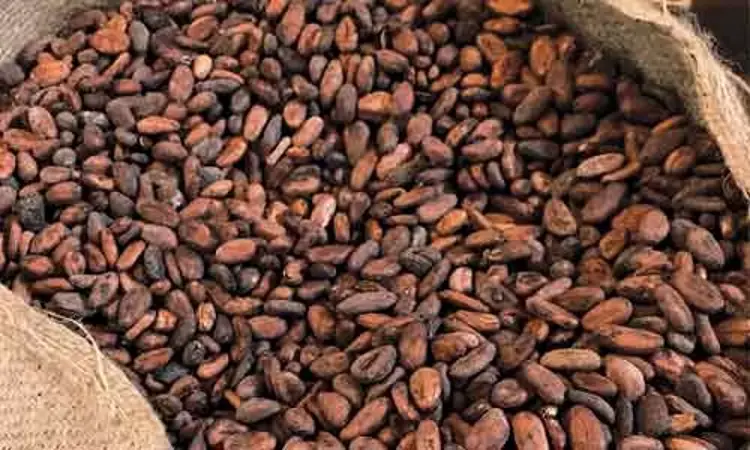- Home
- Medical news & Guidelines
- Anesthesiology
- Cardiology and CTVS
- Critical Care
- Dentistry
- Dermatology
- Diabetes and Endocrinology
- ENT
- Gastroenterology
- Medicine
- Nephrology
- Neurology
- Obstretics-Gynaecology
- Oncology
- Ophthalmology
- Orthopaedics
- Pediatrics-Neonatology
- Psychiatry
- Pulmonology
- Radiology
- Surgery
- Urology
- Laboratory Medicine
- Diet
- Nursing
- Paramedical
- Physiotherapy
- Health news
- Fact Check
- Bone Health Fact Check
- Brain Health Fact Check
- Cancer Related Fact Check
- Child Care Fact Check
- Dental and oral health fact check
- Diabetes and metabolic health fact check
- Diet and Nutrition Fact Check
- Eye and ENT Care Fact Check
- Fitness fact check
- Gut health fact check
- Heart health fact check
- Kidney health fact check
- Medical education fact check
- Men's health fact check
- Respiratory fact check
- Skin and hair care fact check
- Vaccine and Immunization fact check
- Women's health fact check
- AYUSH
- State News
- Andaman and Nicobar Islands
- Andhra Pradesh
- Arunachal Pradesh
- Assam
- Bihar
- Chandigarh
- Chattisgarh
- Dadra and Nagar Haveli
- Daman and Diu
- Delhi
- Goa
- Gujarat
- Haryana
- Himachal Pradesh
- Jammu & Kashmir
- Jharkhand
- Karnataka
- Kerala
- Ladakh
- Lakshadweep
- Madhya Pradesh
- Maharashtra
- Manipur
- Meghalaya
- Mizoram
- Nagaland
- Odisha
- Puducherry
- Punjab
- Rajasthan
- Sikkim
- Tamil Nadu
- Telangana
- Tripura
- Uttar Pradesh
- Uttrakhand
- West Bengal
- Medical Education
- Industry
Pure cocoa powder improves visual acuity in adults in daylight: Study

Pure cocoa powder improves visual acuity in adults in daylight, found researchers.However they did not see any effect either on adaptation to darkness or on visual acuity measured in low light conditions (mesopic vision), either with cocoa or with berries.
Madrid, Spain: Consuming 2.5 grams of pure natural cocoa powder improves visual acuity in healthy young adults and in daylight conditions, finds a recent study in the Journal of Functional Foods.
The research by the Universidad Complutense de Madrid (UCM) and the ICTAN (Institute of Food and Nutrition Science and Technology) of the CSIC, analyzed the effects of two dietary polyphenols: cocoa flavanols and red berry anthocyanins.
"Although this was the baseline hypothesis, we did not see any effect either on adaptation to darkness or on visual acuity measured in low light conditions (mesopic vision), either with cocoa or with berries," indicates María Cinta Puell Marín, researcher at the Optometry and Vision Department and Director of the Applied Vision Group at the UCM.
The researchers attributed the positive effects on photopic visual acuity to improved attention or processing of visual information thanks to the flavanols and theobromine, a group of alkaloids which stimulate the central nervous system and are found in cocoa, similar to caffeine in coffee.
In order to conduct the study, the volunteers drank a glass of milk with cocoa, berries, or just milk on three separate visits to provide an intervening washout period (time to eliminate the traces of each foodstuff). The levels of polyphenols in their urine were measured after three hours.
To measure visual acuity, letter charts were placed four metres from the individuals in different lighting conditions, one high (photopic) and one low (mesopic). Adaptation to darkness employed a psychophysical method measuring the sensitivity recovery dynamic subsequent to the whitening of the retinal photopigments.
Before these tests, a series of questionnaires and eye examinations were conducted to demonstrate the absence of any dietary factor or prior pathology which could give rise to any error in the analysis of the results and the conclusions drawn.
"We need to conduct certain further studies as proof of concept to confirm that the effect is real and that the results could be applied to the design of products which could help to improve visual acuity and attention in defined populations," adds Sonia de Pascual-Teresa of the ICTAN-CSIC.
Reference:
The study titled, "The acute effect of cocoa and red-berries on visual acuity and cone-mediated dark adaptation in healthy eyes," is published in the Journal of Functional Foods.
https://www.sciencedirect.com/science/article/pii/S1756464621000840
Hina Zahid Joined Medical Dialogue in 2017 with a passion to work as a Reporter. She coordinates with various national and international journals and association and covers all the stories related to Medical guidelines, Medical Journals, rare medical surgeries as well as all the updates in the medical field. Email: editorial@medicaldialogues.in. Contact no. 011-43720751
Dr Kamal Kant Kohli-MBBS, DTCD- a chest specialist with more than 30 years of practice and a flair for writing clinical articles, Dr Kamal Kant Kohli joined Medical Dialogues as a Chief Editor of Medical News. Besides writing articles, as an editor, he proofreads and verifies all the medical content published on Medical Dialogues including those coming from journals, studies,medical conferences,guidelines etc. Email: drkohli@medicaldialogues.in. Contact no. 011-43720751


